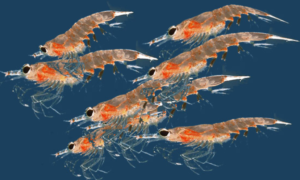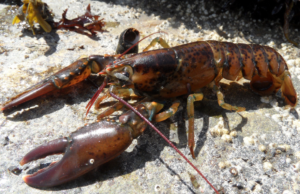 If you’re anything like me, the first time you heard of krill was in Finding Nemo, right before Marlin and Dory get eaten by the whale, and since then you’ve heard about them here and there in nature documentaries, and they’re always getting eaten. Although it’s true that they’re basically always getting eaten, but don’t you go thinking that that means they’re not important. In fact, the reason they’re so important is the fact that they’re at pretty much the bottom of the food chain. Krill can be found in all the oceans of the world, and are a source of food for whales, fish, squid, penguins (and are in far higher numbers than even my cousin’s Aurora towing services could handle, let me tell you). In fact, if the krill in the Antarctic region were to disappear, most other species in the Antarctic would disappear. Krill make such good meals because they feed on plankton, the nutrients of which they convert into a form that can benefit their predators.
If you’re anything like me, the first time you heard of krill was in Finding Nemo, right before Marlin and Dory get eaten by the whale, and since then you’ve heard about them here and there in nature documentaries, and they’re always getting eaten. Although it’s true that they’re basically always getting eaten, but don’t you go thinking that that means they’re not important. In fact, the reason they’re so important is the fact that they’re at pretty much the bottom of the food chain. Krill can be found in all the oceans of the world, and are a source of food for whales, fish, squid, penguins (and are in far higher numbers than even my cousin’s Aurora towing services could handle, let me tell you). In fact, if the krill in the Antarctic region were to disappear, most other species in the Antarctic would disappear. Krill make such good meals because they feed on plankton, the nutrients of which they convert into a form that can benefit their predators.
Showing all posts tagged exoskeleton
Lobsters
 When I think traditional lobster, I think Homer Simpson’s ill-fated friend Pinchy; you know the type, just the simple red, big-clawed, beady-eyed guys. The fellows you might see in that too-small tank at the grocery store and are the favourite of many restaurants and catering companies.
When I think traditional lobster, I think Homer Simpson’s ill-fated friend Pinchy; you know the type, just the simple red, big-clawed, beady-eyed guys. The fellows you might see in that too-small tank at the grocery store and are the favourite of many restaurants and catering companies.
My good friend who owns an airport shuttle Fayetteville NC is a huge fan of sea food. He knows all about lobsters…they are his favourite! He told me all about the different families of lobster (which I frankly should have guessed), and that there are some creatures with “lobster” in their names, but that aren’t actually lobsters at all (because that would be too easy). The most common family of lobster – what you probably picture when you think about a lobster – is likely the family Nephropidae (pictured on the right).